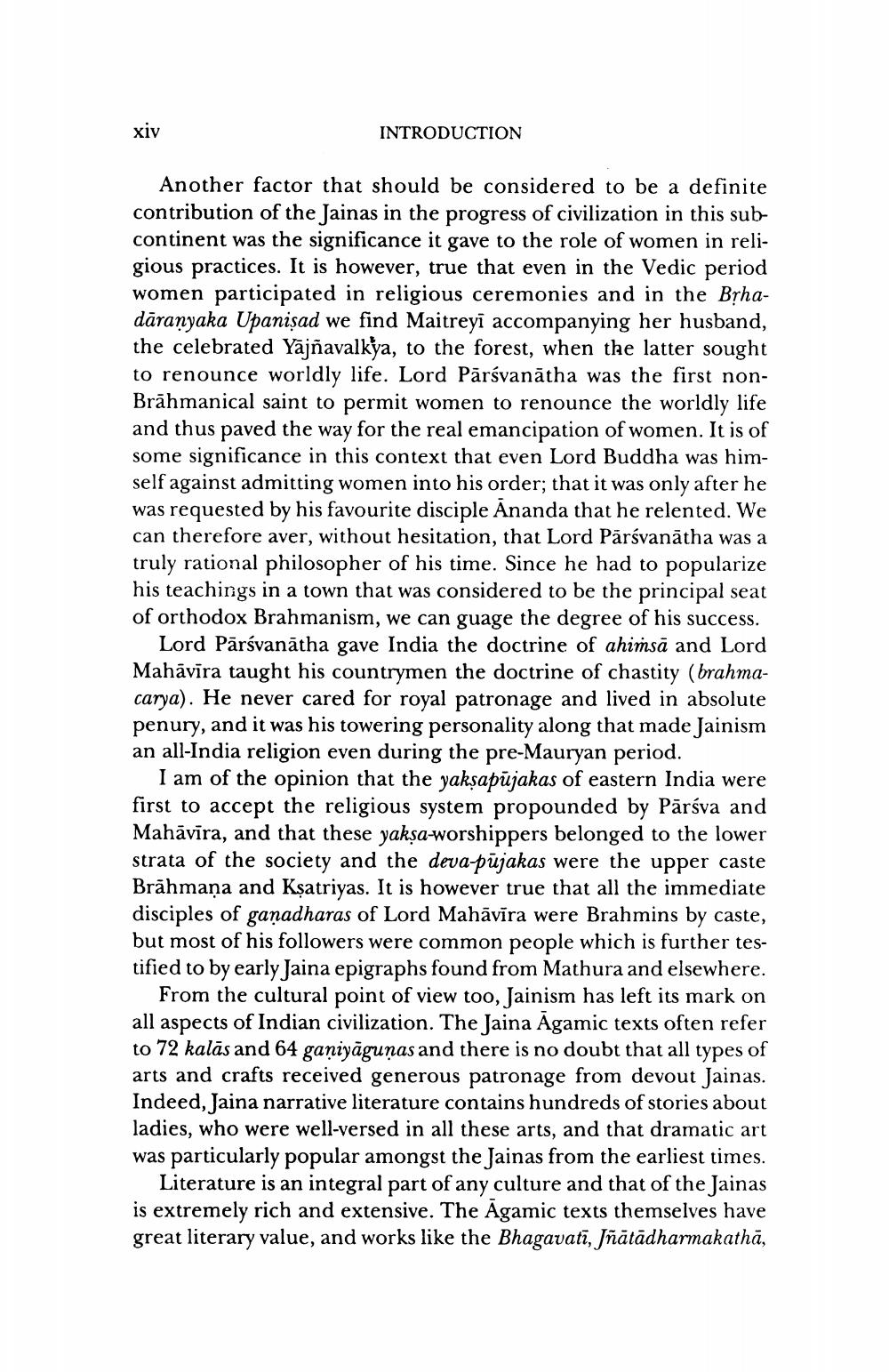________________
xiv
INTRODUCTION
Another factor that should be considered to be a definite contribution of the Jainas in the progress of civilization in this subcontinent was the significance it gave to the role of women in religious practices. It is however, true that even in the Vedic period women participated in religious ceremonies and in the Brhadāranyaka Upanisad we find Maitreyi accompanying her husband, the celebrated Yājñavalkya, to the forest, when the latter sought to renounce worldly life. Lord Pārsvanātha was the first nonBrāhmanical saint to permit women to renounce the worldly life and thus paved the way for the real emancipation of women. It is of some significance in this context that even Lord Buddha was himself against admitting women into his order; that it was only after he was requested by his favourite disciple Ananda that he relented. We can therefore aver, without hesitation, that Lord Pärśvanātha was a truly rational philosopher of his time. Since he had to popularize his teachings in a town that was considered to be the principal seat of orthodox Brahmanism, we can guage the degree of his success.
Lord Pārsvanātha gave India the doctrine of ahimsā and Lord Mahāvīra taught his countrymen the doctrine of chastity (brahmacarya). He never cared for royal patronage and lived in absolute penury, and it was his towering personality along that made Jainism an all-India religion even during the pre-Mauryan period.
I am of the opinion that the yaksapūjakas of eastern India were first to accept the religious system propounded by Pārśva and Mahāvīra, and that these yakşa-worshippers belonged to the lower strata of the society and the deva-pujakas were the upper caste Brāhmana and Ksatriyas. It is however true that all the immedia disciples of ganadharas of Lord Mahāvīra were Brahmins by caste, but most of his followers were common people which is further testified to by early Jaina epigraphs found from Mathura and elsewhere.
From the cultural point of view too, Jainism has left its mark on all aspects of Indian civilization. The Jaina Agamic texts often refer to 72 kalās and 64 ganiyāgunas and there is no doubt that all types of arts and crafts received generous patronage from devout Jainas. Indeed, Jaina narrative literature contains hundreds of stories about ladies, who were well-versed in all these arts, and that dramatic art was particularly popular amongst the Jainas from the earliest times.
Literature is an integral part of any culture and that of the Jainas is extremely rich and extensive. The Agamic texts themselves have great literary value, and works like the Bhagavatī, jñātādharmakathā,




